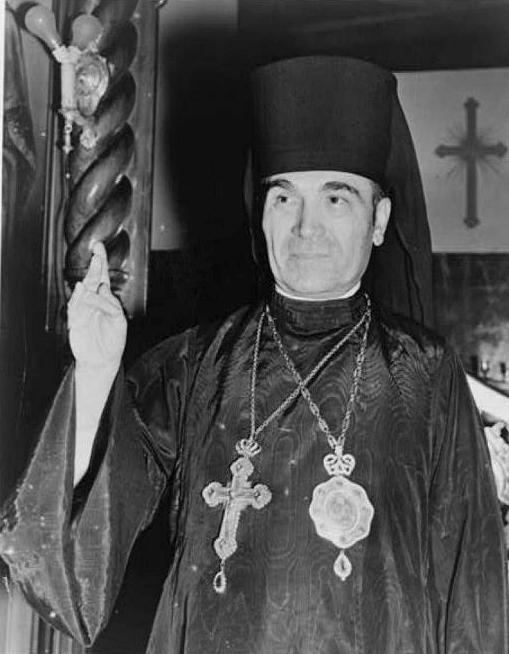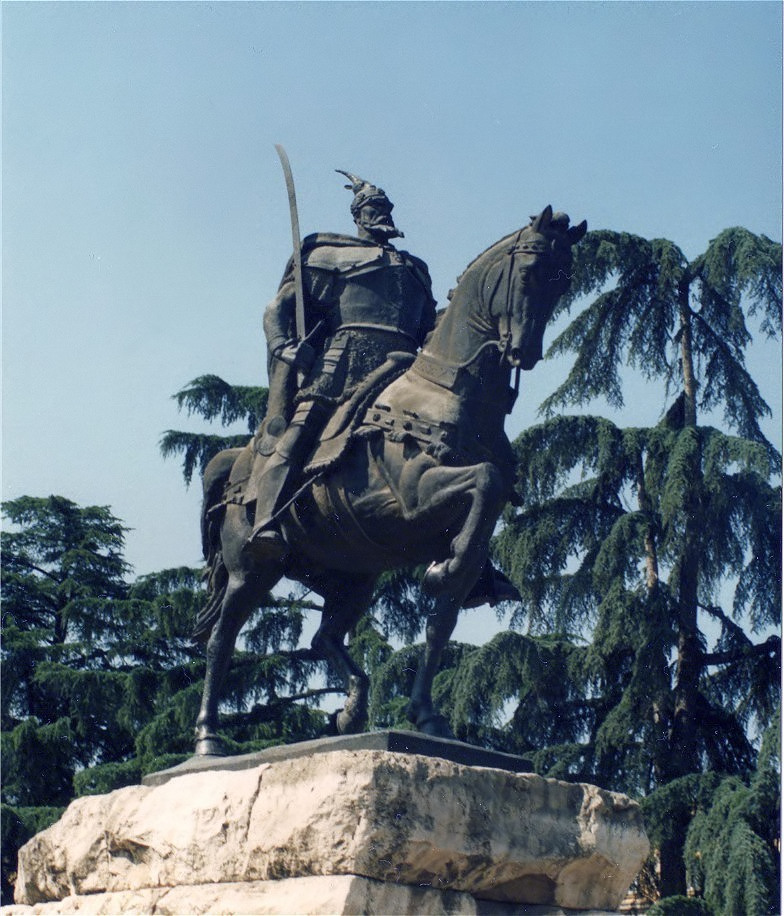|
Janaq Paço
Janaq Paço (14 March 1914,“Gladitorët”, porositur dhe paguar nga Arkeologjiku i Durrësit . durreslajm.com (26 August 2013) Konitsa, Kingdom of Greece – 11 July 1991, Tirana, Albania) was one of the best known Albanian sculptors of the 20th century. Some of his prominent works include the monuments of Skanderbeg in Kruja, Tirana, and Pristina, Kosovo (reproduced post-mortem), as well as ''The Gladiators''. Life Paço was of Aromanians, Aromanian origins. He studied first in his home town and then at the high school in Thessaloniki, Greece. Afterwards he entered the Athens School of Fine Arts in Athens. During his studies, Paço worked and studied with the Greek mod ...[...More Info...] [...Related Items...] OR: [Wikipedia] [Google] [Baidu] |
Jordan Misja Artistic Lyceum
The Jordan Misja Artistic Lyceum () is an artistic school in Tirana, Albania, for youth from 6 to 18 years old. Established in 1946, it included music, ballet, dramatic arts, painting and sculpting classes. Today it offers integrated studies of general classes and arts, music, and sculpture classes. Most Albanian professional artists are alumni of the school. History The Artistic Lyceum was established in 1946 and was given the name of World War II People's Hero Jordan Misja, who had been a painter. For several decades it was the only artistic high school in Albania. It used to have five departments: Theoretical, Canto, Dramatic Arts, Choreography, and Figurative Arts (with several specialties). In 1973, following a speech from March by Enver Hoxha, then Albania's communist dictator, Agron Dushku, a delegate of the Central Committee of the Party of Labor of Albania, reported to the Central Committee that the Lyceum had a low level of communist behavior and that there was indif ... [...More Info...] [...Related Items...] OR: [Wikipedia] [Google] [Baidu] |
Skanderbeg Museum
The National History Museum "Gjergj Kastrioti Skënderbeu" (), also known as the Skanderbeg Museum or the Kruja Museum, is located in Krujë and is one of the most important and visited museums in Albania. The museum was built at the end of the 1970s and was inaugurated on November 1, 1982. Its architecture was designed by architects Pirro Vaso and Pranvera Hoxha (the daughter of Enver Hoxha). Construction works were realized by a local team managed by Robert Kote. The museum has the character of a memorial, architecturally inspired by traditional Albanian stone towers and medieval Romanesque architecture. The name of the museum is in the honor of the Albanian national hero Gjergj Kastrioti Skënderbej. The Krujë Castle, which houses the museum, is a historic citadel. Ottoman troops attacked it thrice, in 1450, 1466 and 1467, but failed to take control until a fourth siege in 1476. It was this impregnable fortress that helped George Kastrioti Skanderbeg defend Albania from th ... [...More Info...] [...Related Items...] OR: [Wikipedia] [Google] [Baidu] |
Durrës
Durrës ( , ; sq-definite, Durrësi) is the List of cities and towns in Albania#List, second most populous city of the Albania, Republic of Albania and county seat, seat of Durrës County and Durrës Municipality. It is one of Albania's oldest list of oldest continuously inhabited cities, continuously inhabited cities, with roughly 2,500 years of recorded history. It is located on a flat plain along the Albanian Adriatic Sea Coast between the mouths of the Erzen River, Erzen and Ishëm (river), Ishëm at the southeastern corner of the Adriatic Sea. Durrës' climate is profoundly influenced by a seasonal Mediterranean climate. Durrës was founded under the name of Epidamnos around the 7th century BC, by Ancient Greece, ancient Greek colonists from Corinth and Korkyra (polis), Corcyra in cooperation with the Taulantii, a local Illyrians, Illyrian tribe. Also known as Dyrrachium, Durrës developed as it became an integral part of the Roman Empire and its successor the Byzantine Em ... [...More Info...] [...Related Items...] OR: [Wikipedia] [Google] [Baidu] |
Durrës Amphitheatre
Durrës ( , ; sq-definite, Durrësi) is the second most populous city of the Republic of Albania and seat of Durrës County and Durrës Municipality. It is one of Albania's oldest continuously inhabited cities, with roughly 2,500 years of recorded history. It is located on a flat plain along the Albanian Adriatic Sea Coast between the mouths of the Erzen and Ishëm at the southeastern corner of the Adriatic Sea. Durrës' climate is profoundly influenced by a seasonal Mediterranean climate. Durrës was founded under the name of Epidamnos around the 7th century BC, by ancient Greek colonists from Corinth and Corcyra in cooperation with the Taulantii, a local Illyrian tribe. Also known as Dyrrachium, Durrës developed as it became an integral part of the Roman Empire and its successor the Byzantine Empire. The Via Egnatia started in the city and led east across the fields, lowlands and highlands of the Balkan Peninsula to Constantinople. In the Middle Ages, Durrës was conte ... [...More Info...] [...Related Items...] OR: [Wikipedia] [Google] [Baidu] |
Alexander Moissi
Alexander () is a male name of Greek origin. The most prominent bearer of the name is Alexander the Great, the king of the Ancient Greek kingdom of Macedonia who created one of the largest empires in ancient history. Variants listed here are Aleksandar, Aleksander, Oleksandr, Oleksander, Aleksandr, and Alekzandr. Related names and diminutives include Iskandar, Alec, Alek, Alex, Alexsander, Alexandre, Aleks, Aleksa, Aleksandre, Alejandro, Alessandro, Alasdair, Sasha, Sandy, Sandro, Sikandar, Skander, Sander and Xander; feminine forms include Alexandra, Alexandria, and Sasha. Etymology The name ''Alexander'' originates from the (; 'defending men' or 'protector of men'). It is a compound of the verb (; 'to ward off, avert, defend') and the noun (, genitive: , ; meaning 'man'). The earliest attested form of the name, is the Mycenaean Greek feminine anthroponym , , (/Alexandra/), written in the Linear B syllabic script. Alaksandu, alternatively called ''Alakasandu'' or ... [...More Info...] [...Related Items...] OR: [Wikipedia] [Google] [Baidu] |
Fan Noli
Theofan Stilian Noli, known as Fan Noli (6 January 1882 – 13 March 1965), was an Albanian Americans, Albanian-American writer, scholar, diplomat, politician, historian, orator, bishop, and founder of the Albanian Orthodox Church and the Albanian Orthodox Archdiocese in America who served as List of Prime Ministers of Albania, Prime Minister and regent of Principality of Albania, Albania in 1924 during the June Revolution. Fan Noli is venerated in Albania as a champion of literature, history, theology, diplomacy, journalism, music, national unity and ecumenism. He played an important role in the consolidation of Albanian language, Albanian as the national Albanian language, language of Albania with numerous translations of world literature masterpieces.. He also wrote extensively in English: as a scholar and author of a series of publications on Skanderbeg, William Shakespeare, Shakespeare, Ludwig van Beethoven, Beethoven, religious texts and translations. He produced a translati ... [...More Info...] [...Related Items...] OR: [Wikipedia] [Google] [Baidu] |
Andrea Mano
Andrea is a given name which is common worldwide for both males and females, cognate to Andreas, Andrey, Andrej and Andrew. Origin of the name The name derives from the Greek language, Greek word ἀνήρ (''anēr''), genitive ἀνδρός (''andrós''), that refers to man as opposed to woman (whereas ''man'' in the sense of ''human being'' is ἄνθρωπος, ''ánthropos''). The original male Greek name, ''Andréas'', represents the hypocoristic, with endearment functions, of male Greek names composed with the ''andr-'' prefix, like Androgeos (''man of the earth''), Androcles (''man of glory''), Andronicus (other), Andronikos (''man of victory''). In the year 2006, it was the third most popular name in Italy with 3.1% of newborns. It is part of the Italian male names ending in ''a'', some others being Elia (other), Elia (Elias), Enea (Aeneas (other), Aeneas), Luca (given name), Luca (Lucas (given name), Lucas), Mattia (other), Mattia ... [...More Info...] [...Related Items...] OR: [Wikipedia] [Google] [Baidu] |
Odhise Paskali
Odhise Paskali (22 December 1903 – 13 September 1985) was an Albania Albania ( ; or ), officially the Republic of Albania (), is a country in Southeast Europe. It is located in the Balkans, on the Adriatic Sea, Adriatic and Ionian Seas within the Mediterranean Sea, and shares land borders with Montenegro to ...n sculptors, sculptor. For his contribution, he was awarded the People's Artist of Albania award. Early life Paskali was born in 1903 in Përmet, Ottoman Empire. In 1925 when Paskali realized ''The Hungry'' he sent the work along with ''Face of a Girl'' (''Fytyrë vajze'') to Ahmet Zogu, then Prime Minister of Albania, and asked in return for a scholarship to study in an academy of arts in Italy. Zogu fulfilled his desire by sending him to Turin. As a student in Turin, he initiated the Albanian Student Association (''Studenti shqiptar'') and the magazine of the Albanian Students of Turin. He graduated in 1927 in Art Critique at the Literature and Philosophy Scho ... [...More Info...] [...Related Items...] OR: [Wikipedia] [Google] [Baidu] |
Kosovo War
The Kosovo War (; sr-Cyrl-Latn, Косовски рат, Kosovski rat) was an armed conflict in Kosovo that lasted from 28 February 1998 until 11 June 1999. It was fought between the forces of the Federal Republic of Yugoslavia (FRY), which controlled Kosovo before the war, and the Kosovo Albanian separatist militia known as the Kosovo Liberation Army (KLA). The conflict ended when the North Atlantic Treaty Organization (NATO) intervened by beginning air strikes in March 1999 which resulted in Yugoslav forces withdrawing from Kosovo. The KLA was formed in the early 1990s to fight against the discrimination of ethnic Albanians and the repression of political dissent by the Serbian authorities, which started after the suppression of Kosovo's autonomy and other discriminatory policies against Albanians by Serbian leader Slobodan Milošević in 1989. The KLA initiated its first campaign in 1995 ... [...More Info...] [...Related Items...] OR: [Wikipedia] [Google] [Baidu] |
Krujë
Krujë ( sq-definite, Kruja; see also the etymology section) is a town and a municipality in north-central Albania. Located between Mount Krujë and the Ishëm River, the city is 20 km north of the capital of Albania, Tirana. Krujë was inhabited by the ancient Illyrian tribe of the Albanoi. In 1190 Krujë became the capital of the first Albanian state in the Middle Ages, the Principality of Arbanon. Later it was the capital of the Kingdom of Albania, while in the early 15th century Krujë was conquered by the Ottoman Empire, but then recaptured in 1443 by Skanderbeg, leader of the League of Lezhë, who successfully defended it against three Ottoman sieges until his death in 1468. The Ottomans took control of the town after the fourth siege in 1478, and incorporated it in their territories. A 1906 local revolt against the Ottoman Empire was followed by the 1912 Declaration of Independence of Albania. In the mid-1910s Krujë was one of the battlefields of the conflic ... [...More Info...] [...Related Items...] OR: [Wikipedia] [Google] [Baidu] |
Albanian League Of Writers And Artists
The League of Writers and Artists of Albania () is a non-profit organization founded with the goal of promoting and advancing the literary and artistic creativity of Albanian writers and artists. Its mission includes assessing and reassessing outstanding works in disciplines such as music, painting, sculpture and literature. The organization supports originality and innovation among emerging young artists while preserving Albanian cultural tradition. Overview LSHASH is a creative organization based in Tirana, bringing together writers, composers, visual artists and critics. It came about from the merger of two separate entities: the League of Writers, founded on October 7, 1945, and the League of Artists, established in 1949. These organizations unified during the First Congress in 1957, forming what is now known as the League of Writers and Artists of Albania. Initially, the organization had 74 members, including some of Albania’s most prominent intellectuals and cultural figur ... [...More Info...] [...Related Items...] OR: [Wikipedia] [Google] [Baidu] |




